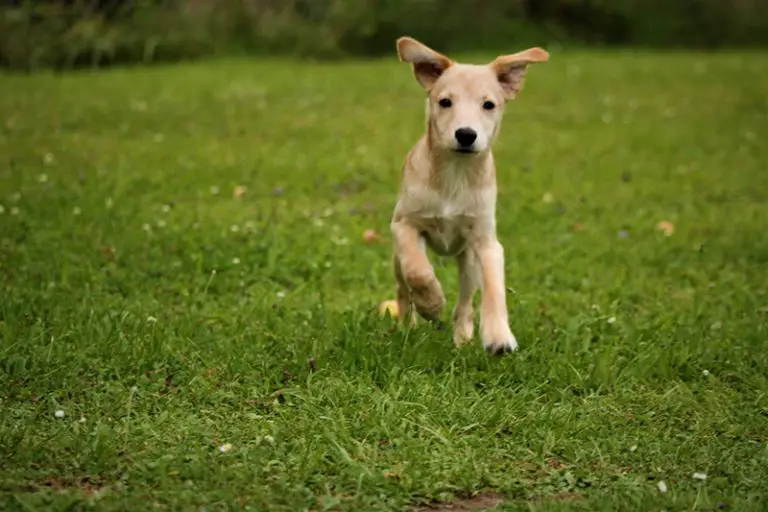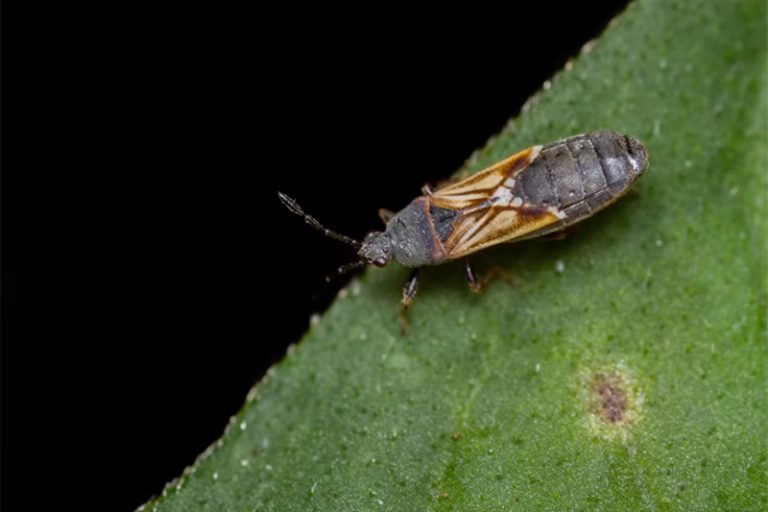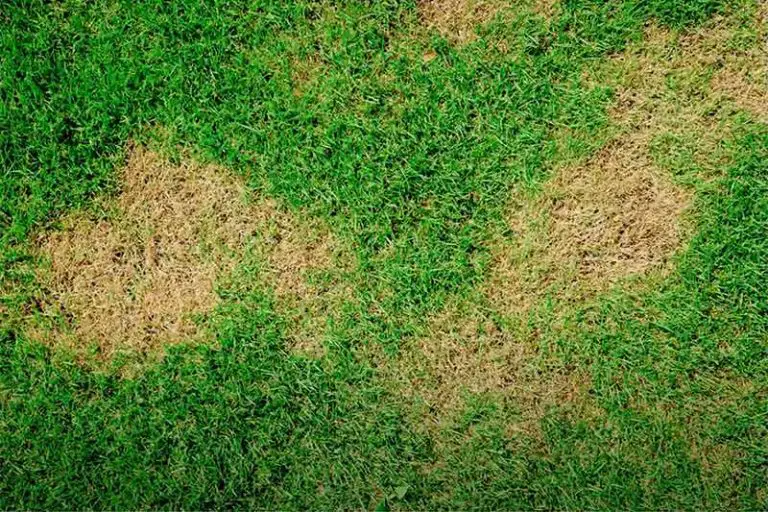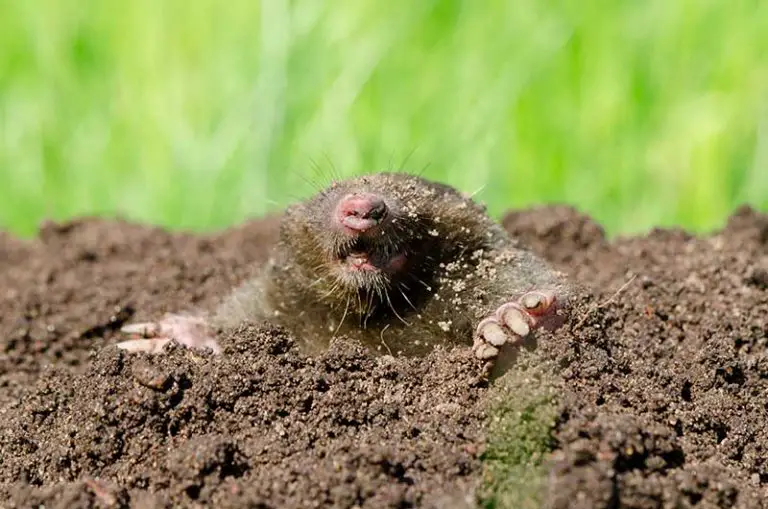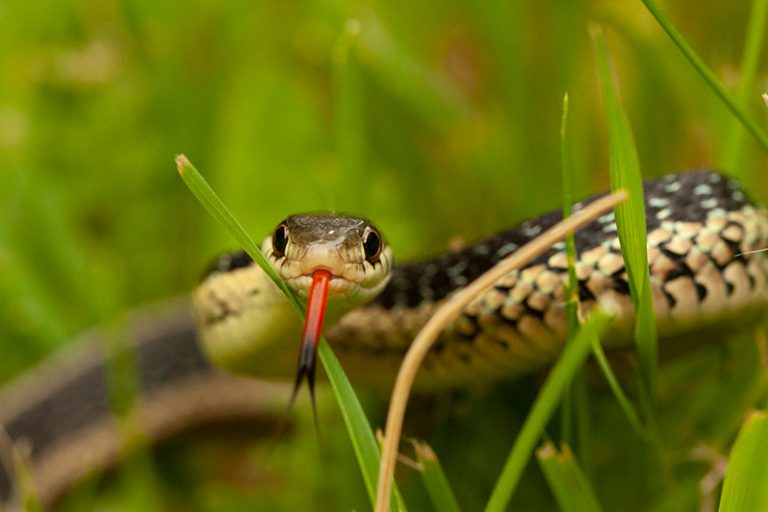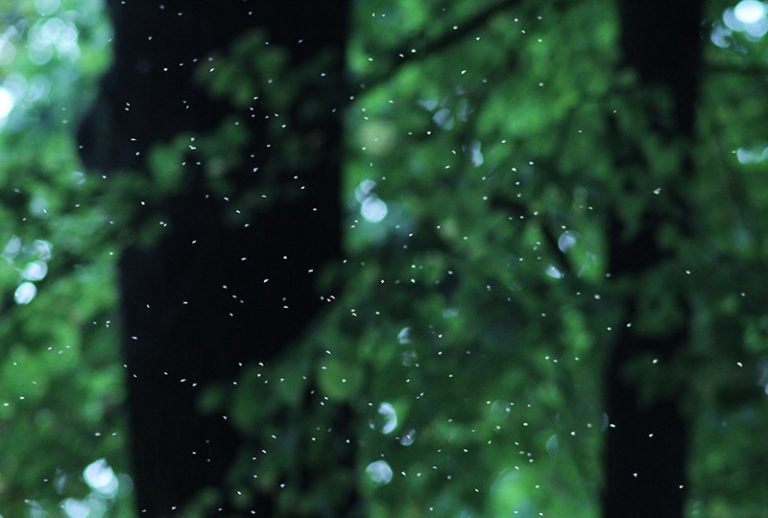Grubs in Lawn: Signs of Lawn Grubs and How to Get Rid of Them
Lawn grubs are a natural part of our ecosystem, and are relatively harmless in small numbers. However, they can cause some serious damage to lawns if they’re allowed to take over due to their appetite for grass roots.
Aside from actually seeing these small, white, worm-like creatures on the soil surface, the most telltale sign that you are suffering from a lawn grub infestation is noticing changes in the health of the grass in your lawn. Natural solutions to get rid of lawn grubs include using beneficial nematodes, milky spore bacteria, or encouraging bird activity in your lawn, while chemical solutions include using a curative or preventative insecticide.
Read through our guide to learn more about what lawn grubs actually are, the signs that you may have an infestation in your lawn, and the steps you can take to get rid of lawn grubs using either a natural or chemical method.
What Are Lawn Grubs?
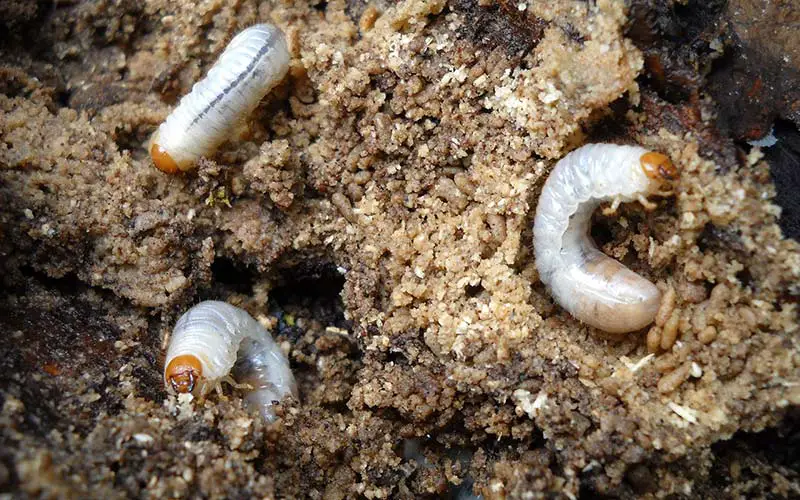
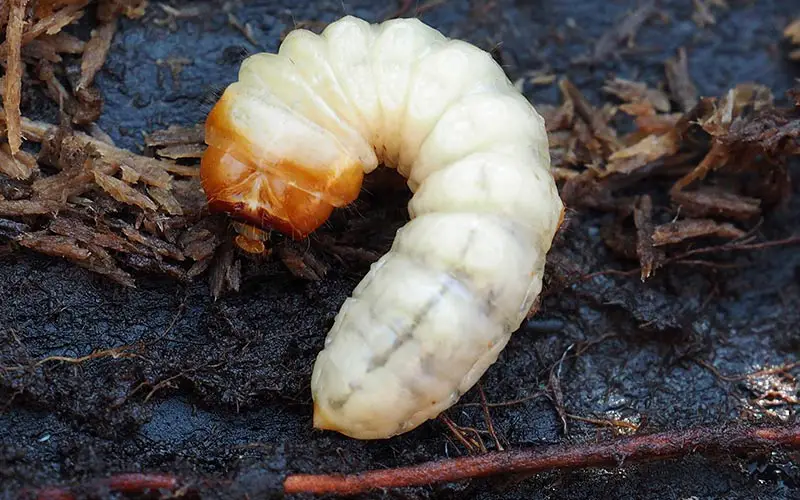
Lawn grubs, also commonly known as white grubs, are the immature larval form of several different types of Scarab beetle. They are small, white creatures, with a soft C-shaped body and legs near their head. Lawn grubs survive by feeding on organic matter in the soil, especially the roots of grass, which is why they can cause so much damage to what would otherwise be a healthy lawn – if present in large quantities.
The species of beetles that start off as lawn grubs include:
- Asiatic garden beetles
- Black turfgrass ataenius
- European chafers
- Green June beetles (June bugs)
- Japanese beetles
- Northern masked chafers
- Oriental beetles
- Southern masked chafers
While the mature form of these beetles can also harm grass and other plants in your yard, the real damage is done when they lay their eggs and the eggs hatch into hungry, destructive lawn grubs.
Signs of Grubs in Lawn
Moths or Beetles Flying Around Grass Level
Noticing a large number of moths or beetles flying low to the ground in your yard can be a clear indication that you have a lawn grub infestation. When the lawn grubs grow out of their larval stage, they become mature beetles, which will then fly around your lawn to search for somewhere that they can lay their eggs and continue their life cycle. Even if after some investigation you determine that you don’t currently have a lawn grub infestation, this could still indicate that an infestation is imminent and that you’ll need to take some preventative measures before the beetles lay their eggs.
Animals Digging Up Yard
An increased presence of animals such as raccoons, moles, skunks, armadillos, and birds digging up the turf in your yard can be an indication that you have a lawn grub infestation – even certain types of wasps flying low to the ground can be an indication of this. Take note that these animals enjoy eating earthworms and a number of other insects that live in soil, so an increase in animal activity doesn’t always necessarily indicate that you have an infestation of grubs. Use the method outlined in the following section to determine whether you do actually have a grub problem before taking any preventative measures.
Patches of Brown Grass on Lawn
The damage that lawn grubs do to the grass’ root systems can cause irregular patches of thin, brown grass, which will eventually turn into larger brown patches throughout the yard. If caused by lawn grubs, these patches tend to appear during the late summer or early fall – the lawn grubs enter their phase of most active feeding during this time, so this is when the damage caused to the grass is also more noticeable. While patches of brown grass may be an indication of lawn grubs, there are a number of other potential causes such as drought or fungal diseases like brown patch fungus. Follow the method in the next section to determine whether grubs are causing the brown patches in your lawn before taking any preventative measures against them.
Grass on Lawn Feels Bouncy or Loose
If you have a lawn grub infestation, this may cause the grass to feel bouncy or loose underfoot. The damage that lawn grubs do to the grass’ root systems weakens the connection between the root base and the green turf, which causes the grass to feel loose when walked on.
Grass on Lawn Suffering From Full Turf Detachment
Following on from the previous sign, these pests can destroy the connection between the grass blades and roots which eventually causes the turf to become completely detached from the ground. When the damage is this bad, you will be able to pull up the turf easily and roll it away from the ground like a rug. This level of damage tends to occur between June and October.
Seeing Grubs on Lawn
Obviously, this is the most telltale sign that you have an infestation of lawn grubs. With that said, lawn grubs in small numbers aren’t necessarily harmful to your lawn – if you have only noticed a few grubs and no other signs of lawn damage, you may not need to take any extreme measures to get rid of the grubs. Follow the method described in the next section to determine whether you have an unhealthy amount of lawn grubs on your lawn.
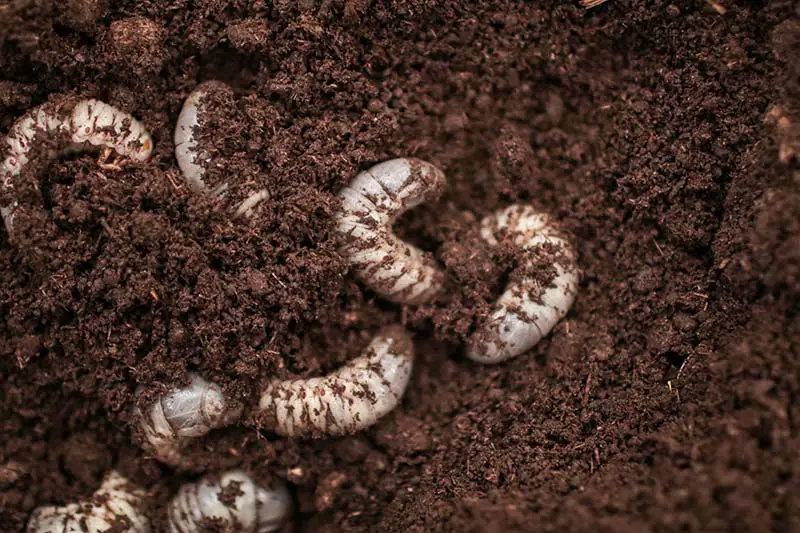
How to Tell if You Have Grubs in Lawn
Before you start taking any of the preventative measures listed later in this article, follow these steps to determine that lawn grubs are causing the issues in your lawn:
1. Identify the Problem Areas in Your Lawn
Look over your lawn and identify the areas you suspect are infested with lawn grubs. It’s best to do this during August and September as this is when the grubs are most active and closest to the soil surface.
2. Cut Sections of Turf and Inspect for Grubs
Use a spade to cut around single square foot sections of turf, cutting into the soil at a depth of about 2 – 4 inches, in different areas across your lawn. Pull up the square foot pieces to look at the underlying soil, and inspect it along with the turf and thatch layer.
3. Count Number of Grubs Present
If you can see grubs, this doesn’t necessarily mean you have to treat your lawn. Count the number of grubs you can see in each square foot piece and follow the table below to determine your lawn’s requirement for treatment:
| Number of Grubs Per Sq Foot | Treatment Needed |
| 0 – 5 | No treatment |
| 6 – 9 (Healthy Lawn) | No treatment |
| 6 – 9 (Stressed Lawn) | May require treatment |
| 10 + | Treatment absolutely necessary |
4. Replace Sections of Turf and Water Grass
Replace the square foot sections of turf and pat them down so they’re firmly back in place. Water the sections to prevent the grass from drying out.
How to Get Rid of Lawn Grubs Naturally
Nematodes
Nematodes are a category of microscopic parasitic worms, with some particular species of nematodes being a solution for lawn grub control. The beneficial species of nematodes will attack soil-dwelling insects such as lawn grubs, without causing any harm to the surrounding plant life, humans, animals, or earthworms. They will actively pursue the lawn grubs, seeking them out by following their temperature and carbon dioxide emissions, then entering the hosts through their bodily openings.
There are many different types of nematodes and so you must take care to choose a beneficial species rather than one which will do more harm than good to your lawn. The most commonly used species for lawn grub control are called ‘Hb nematodes’, as these are the most effective type when used to combat Japanese beetles, European chafers, and other typical grub-producing lawn pests. This method can work very well as long as the nematodes are used correctly, but it may take up to three years before it’s fully effective.
How to Get Rid of Lawn Grubs Using Nematodes
1. Purchase Nematodes
Purchase your nematodes, making sure that you go for a beneficial species known to get rid of lawn grubs. They will be shipped when they’re in the juvenile stage of their life cycle, as this is when they are infectious to the lawn grubs. The nematodes usually come on a sponge, or in a gel, granule, or liquid form.
2. Wait for Optimal Conditions for Application
Wait for a day of optimal conditions before applying the nematodes – this will depend on the weather conditions of your area and the species of grub you’re trying to get rid of. You will need to make sure that the species of grub you’re trying to combat are at the stage of their life cycle in which they’re actively feeding, which for most species is typically around mid to late August. It’s also important that you apply the nematodes at dusk, or during overcast or rainy conditions; if not, exposure to direct sunlight will neutralize them. They prefer damp conditions, so water the soil with at least ½ inch of water if the soil in your lawn seems overly dry.
3. Apply Nematodes
Apply the nematodes to your lawn following the instructions on the label of your chosen species carefully. As a general idea, if treating a 2000 square foot lawn, take 4 gallons of water under 86°F and mix 1 million nematodes into it. Pour the mixture into a hand sprayer, hose-end sprayer, or pressurized backpack sprayer, and make sure that that the nozzle opening is at least 0.2 inches wide and free of any screens. Spray the solution evenly over the affected area, mixing the solution continuously as you go so that the nematodes don’t settle at the bottom of the tank. Once you have applied the solution, add ¼ inches of water to wash any nematodes off your lawn’s grass blades. For the next two weeks, make sure to keep the soil consistently moist to help the nematodes to become established.
Milky Spore Bacteria
Milky spore is the name given to a naturally occurring bacterium that can be applied to a lawn strategically to effectively control the population of Japanese beetle larvae. The milky spore bacteria is applied to the lawn as a dust, and the grubs inadvertently ingest it while feeding on the grass roots, which causes the grubs to become infected with the bacteria and to die off.
For this method to be effective, the soil must be warm enough during the spring. For this reason, in the US, it is only recommended to use this method if you live in USDA weather zones 7 to 10. It will likely take several years before you’ll see the full results from this method, but ultimately the bacteria can work to control grubs in your lawn for up to 15 years or more after application.
How to Get Rid of Lawn Grubs Using Milky Spore Bacteria
Apply a tablespoon of milky spore bacteria in dust form per every 4 feet of lawn. It isn’t recommended that you use a spreader or garden sprayer to spread the dust. Immediately after application, lightly water the treated areas for roughly 15 minutes.
Note: While this method is effective against Japanese beetle larvae, milky spore bacteria will not work to combat other types of lawn grub, such as June bugs or May beetles.
Dry Out Lawn
Drying out your lawn can be a risky but effective method to get rid of lawn grubs. The eggs of the grub larvae need moisture to survive and hatch, so removing this moisture will cause them to die off before they get the chance to infest your lawn. Even though this method is risky and will cause your grass to dry up, most grass types will be hardy enough to survive the stress and regreen once you add water after the dry spell.
How to Get Rid of Lawn Grubs by Drying Out Lawn
Avoid adding any water to your lawn for three to four weeks. The grass may turn yellow or brown during this time, however, this indicates that it is dormant rather than completely dead. Help your grass to regreen after the four weeks is up by fertilizing your lawn with a quick release nitrogen-rich fertilizer.
Encourage Birds in Lawn
Encouraging bird activity within your yard can help to control the population of a number of insects, including every type of lawn grub, as many types of bird love to feast on them. Some of the types of birds that like to eat lawn grubs include house wrens, crows, magpies, grosbeaks, robins, blue jays, and starlings. Not only does this help to rid your lawn of grubs, but birds feeding in your lawn in light amounts will also act as natural aerators; their beaks poke holes in the ground as they peck at the grubs.
Despite their potential beneficial effects, too much feeding activity by birds and animals can cause damage to your lawn, so keep an eye out for signs that the grass is becoming severely damaged if you choose to encourage animal activity like this. Also, despite the fact that the presence of these birds can significantly help to get rid of lawn grubs, they may not be as effective at tackling larger scale infestations as other methods.
How to Get Rid of Lawn Grubs by Encouraging Bird Activity
There are several ways you can encourage bird activity in your yard. Create a water source for the birds by placing a birdbath somewhere in your yard, and then create spaces for the birds to nest, such as placing nesting boxes around your yard, keeping dead trees, or creating a brush pile in one corner of your yard. Also, you could try sprinkling some bird food around the areas affected by the grubs to attract and encourage the birds to feed there.
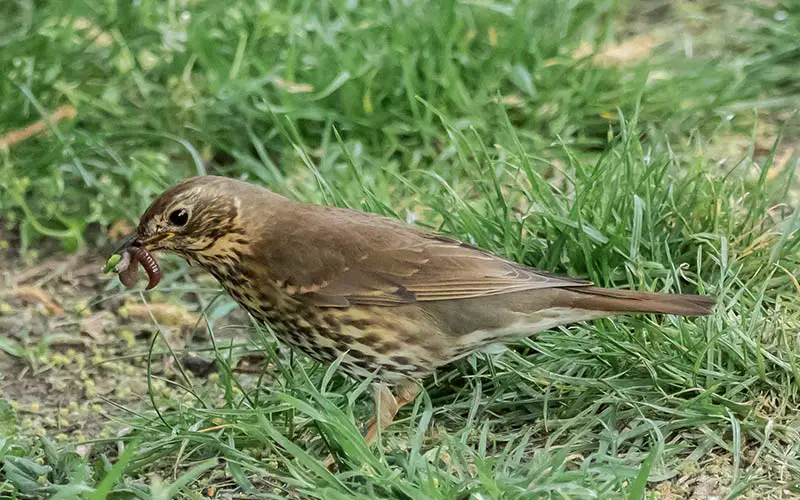
How to Get Rid of Lawn Grubs With Chemicals
Note: It is highly recommended that you attempt to get rid of lawn grubs using a natural method before turning to a chemical solution. Chemical insecticides can be highly harmful to populations of other lawn-friendly creatures and the surrounding environment, so they should only be used for severe lawn grub infestations that don’t respond to natural methods of elimination.
Preventative Grub Control Insecticide
Preventative grub control products are those designed to be used before the lawn grubs have had a chance to hatch and will continue to work to prevent any more grubs from hatching throughout the rest of the season. While some are able to kill grubs that have already hatched, the majority of preventative grub control products are only able to kill the eggs that haven’t yet done so.
In order for preventative grub control insecticide to be effective, you must apply it at the right time of year. These products will not work to kill lawn grubs when applied from mid-October through to mid-May, however, they are highly effective at eliminating the next generation of grubs if applied during June or July. The exact optimal time of year for application will depend on the active ingredient in the product of your choice, so it’s best to refer to the packaging of your product to determine when you should apply it to your lawn.
How to Get Rid of Lawn Grubs Using Preventative Insecticide
Refer to the instructions on the packaging of your chosen preventative lawn grub insecticide to find out the exact directions for application and the time of year at which they should be applied.
Curative Grub Control Insecticide
Curative grub control products are designed to be used to get rid of live lawn grubs in an already established lawn. Insecticides containing bifenthrin, carbaryl, trichlorfon, or imidacloprid will all act almost immediately to kill live grubs on contact.
Like preventative grub control products, it’s crucial to make sure your chosen curative grub product is applied at the right time of year in order for it to be effective – always refer to the label on your product of choice to find out when exactly this is.
How to Get Rid of Lawn Grubs Using Curative Insecticide
Refer to the instructions on the packaging of your chosen preventative lawn grub insecticide to find out the exact directions for application and the time of year at which they should be applied. As an extra tip, you should water your lawn immediately before and after application of any curative chemical grub control product in order to ensure that it becomes well incorporated into the soil.
How to Repair Grass Damaged by Lawn Grubs
Lawn grubs can cause extensive damage to what would otherwise be a healthy lawn full of grass, as the grubs destroy the grass by feeding on the grass’ roots. If your lawn has suffered from a moderate to severe lawn grub infestation, you will likely need to take some reparative measures in order to revive it back to health.
As some basic guidance towards repairing your lawn, you should follow these steps:
1. Rake over affected areas of the lawn to remove the loose and dead patches of grass.
2. Aerate the lawn and follow this up with the lawn care activities most effective after aerating.
3. Overseed the lawn using the best grass for overseeding depending on your current grass species and location.
4. Water the new grass seed in the overseeded areas to encourage deep root growth of your new seedlings.

